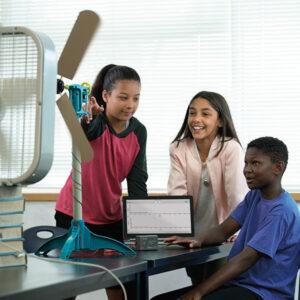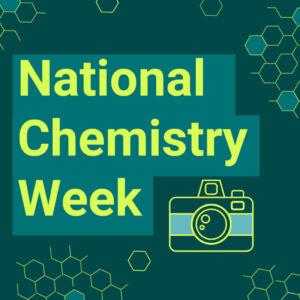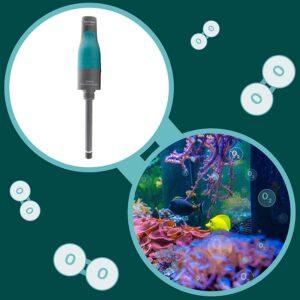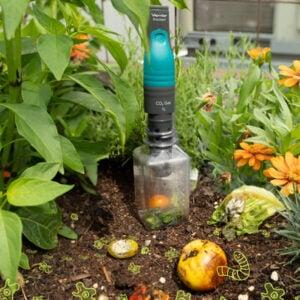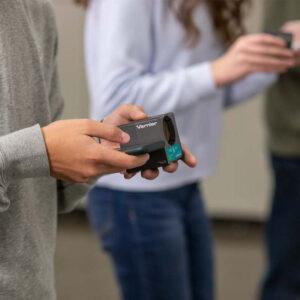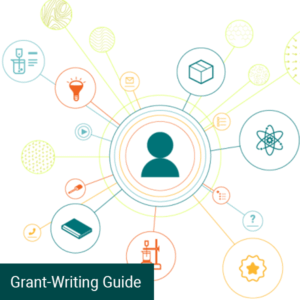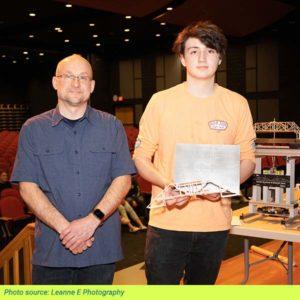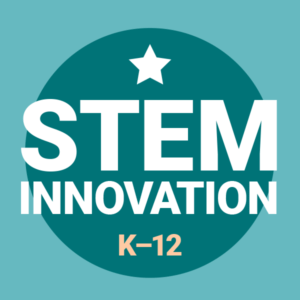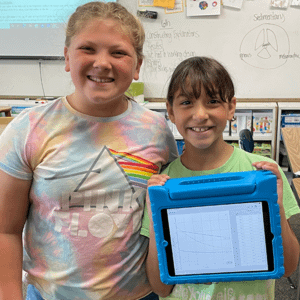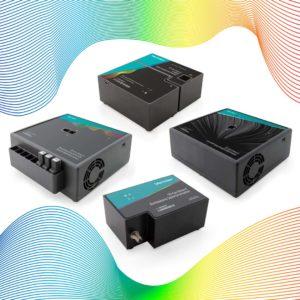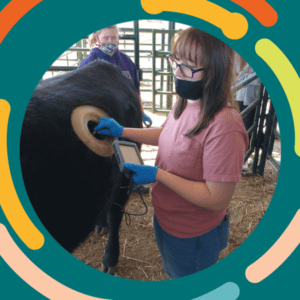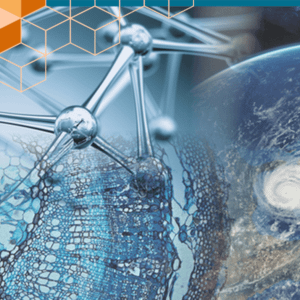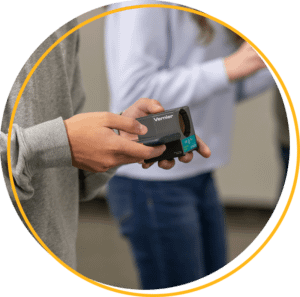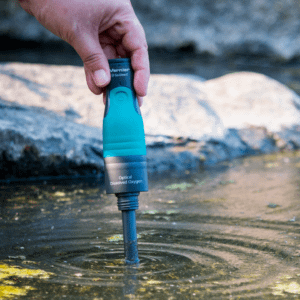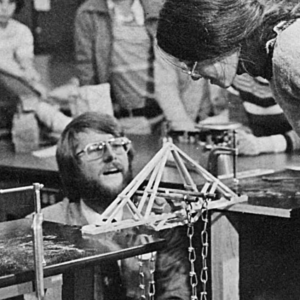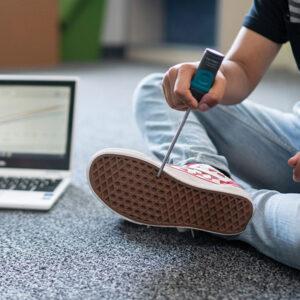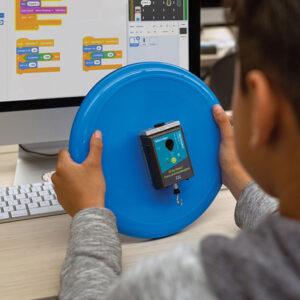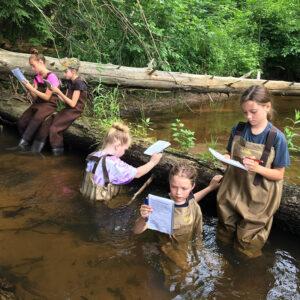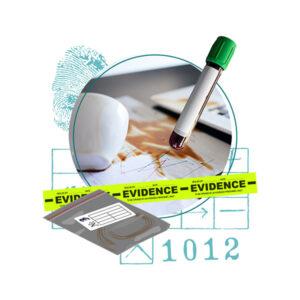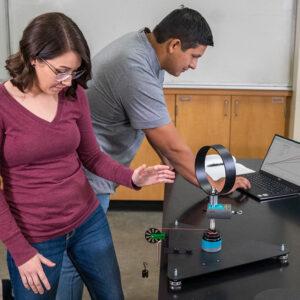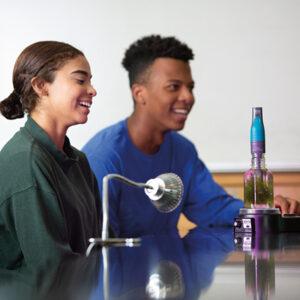
Sharing ideas and inspiration for engagement, inclusion, and excellence in STEM
Four 3D-Aligned Experiments for Your Middle School Classroom
Middle school is a great time to give students more experience collecting and working with data. Whether they’re testing chemical reactions, tracking environmental changes, or exploring energy systems, hands-on investigations help them connect big science ideas to the world around them.
How the Right Tools Help Districts Attract and Retain Great STEM Teachers
The persistent shortage of qualified high school science and STEM educators remains a national challenge, driven in large part by high attrition rates. Among the most commonly cited reasons for leaving are outdated lab equipment, insufficient instructional supplies, and poorly maintained facilities. These conditions hinder effective teaching and diminish job satisfaction—ultimately pushing many science teachers out of the classroom.
This reality has prompted a key question for school and district leaders:
Could strategic investments in modern lab environments help districts not only retain current STEM teachers but also attract new talent?From Seafloors to Salinity: 3 Hands-On Investigations into Ocean Science Phenomena
Covering more than 70% of Earth’s surface, the ocean plays a vital role in our planet’s climate, ecosystems, and everyday life. World Ocean Day (June 8) and World Ocean Month offer timely opportunities to explore this dynamic system through interdisciplinary learning that connects chemistry, biology, Earth science.
Inside the UF Chem Lab: From Lab Management to Real-World Experiment Ideas
Candace Biggerstaff is a lab manager at the University of Florida, where she supports more than 3,000 general chemistry students each week across multiple lab sections and uses Vernier tools to help them conduct hands-on experiments with real-life applications. In the fall, she oversees a team of around 65 TAs, along with additional undergraduate assistants to keep the labs running smoothly. With a background in environmental engineering, she focuses on everything from equipment setup and safety to TA training and experiment development. In this interview, she shares how Vernier tools help support large-scale instruction and give students opportunities to connect chemistry concepts to timely and relevant real-world challenges.
5 Key Tools in Vernier Video Analysis—And How to Use Them
Vernier Video Analysis® helps students explore motion through real-world video, giving them a hands-on way to connect graphical representations of data with the movement they actually see. Whether you're just getting started or looking for a refresher, this post walks you through five key tools in the app—along with tips on when and why to use each one.
Why Emphasizing Science and Engineering Practices Supports Better Assessment Outcomes for Districts
At the NSTA conference in Philadelphia this spring, I had the opportunity to talk with dozens of teachers and administrators who stopped by the Vernier booth to explore new technology and share their experiences with three-dimensional learning. These conversations confirmed what I’ve seen throughout my career in science education—from the classroom to state assessment development: focusing on Science and Engineering Practices (SEPs) is one of the most effective ways to deepen learning and improve student outcomes.
Investigating Solar Energy: Which Variables Optimize Power Output?
Every April, Earth Day offers a timely opportunity to explore how science and engineering intersect with the real world. This year’s theme, Our Power, Our Planet, invites students to consider the role of energy in shaping the future—and how we can use real-world data, engineering design, and problem-solving to explore cleaner, more sustainable options.
In the hands-on investigation outlined here, students use Vernier technology to explore which variables affect solar panel output. With tools like the Go Direct® Energy Sensor and KidWind solar panels, they’ll test and analyze real-time data to determine how design decisions influence performance. Along the way, they’ll build key skills in problem-solving, systems thinking, and evidence-based decision-making—all essential elements of the engineering design process and three-dimensional learning.AP Chemistry Exam 2024 Question 3 Breakdown: Electrochemistry, Alloys, and Common Mistakes
In my last blog post, I broke down Question 1 from the 2024 AP Chemistry Exam, which focused on where students struggled with titrations and calorimetry. Now, let’s look at Free-Response Question 3—another tough one for students. This question asked them to apply their knowledge of oxidation-reduction reactions, periodic trends, and the properties of alloys.As someone who’s taught electrochemistry more times than I can count, I’ve seen how tricky these topics can be without strong foundational understanding and opportunities to see the reactions in action. Below, I’ll highlight the most common knowledge gaps identified in the Chief Reader Report, followed by some Vernier experiments that help reinforce these ideas through hands-on lab work and real-time data collection.
AP Chemistry Exam 2024 Question 1 Breakdown: Titration, Calorimetry, and Common Student Mistakes
Every year, the College Board releases a Chief Reader Report that gives a behind-the-scenes look at how students did on the AP Chemistry free-response questions. It highlights the most common misconceptions, errors, and sticking points—and it’s a goldmine for teachers. Along with sample student responses and scoring guidelines, it’s one of the most useful tools AP chem teachers have for understanding where students are struggling and how we can better support them.
Celebrating Women in STEM: Exploring Diverse Careers, Data, and Discovery
In honor of Women in STEM Month, we spoke with three professionals who use data collection, research, and hands-on science to make an impact in their fields. From food science to environmental compliance, their work showcases the many ways STEM shapes our world and the unique career opportunities your students might not know about. We’ve included engaging classroom experiments that connect to each professional’s field, helping you inspire students by bridging classroom learning with real-world STEM careers.
Animal Acoustics: Analyzing Sound Waves in Physics and Biology
How can physics principles help us better understand biological phenomena? Sound provides a perfect opportunity to bridge these disciplines. By analyzing biological sound patterns—such as whale songs, bird calls, or bat echolocation—students can explore the physics of waves while gaining insights into animal communication and behavior.
In physics, sound is typically studied in units on waves and vibrations, where students examine properties like frequency, amplitude, and wave interference. These same principles also play a role in biology, where sound is crucial for animal behavior, communication, and survival. Using tools like the Go Direct® Sound Sensor and Go Direct Motion Detector, educators can help students connect wave properties to real-world biological systems and take a cross-cutting approach that emphasizes structure and function in both subjects.From the Sky to the Sea: Exploring Earth’s Magnetic Field and Its Impact on Real-World Phenomena
Have you noticed an uptick in the number of opportunities to see aurora borealis—also known as the northern lights—in the last year? While these light displays are common in polar regions such as the Arctic, they have been more visible across a number of states as of late. The reason? A surge in solar activity that directly interacts with Earth's magnetic field.
How Hands-On Learning Deepens STEM Engagement
STEM careers are on the rise. According to the U.S. Bureau of Labor Statistics, employment in STEM occupations is expected to grow by 10.4% from 2023 to 2033, compared to just 3.6% for non-STEM occupations. Despite this demand, many students lack the foundational interest or skills needed to pursue these opportunities. Hands-on STEM learning can bridge this gap.
Color Countdown: Investigating Chemical Kinetics with a Forensic Twist
What makes forensic science such a compelling way to teach chemistry? Whether or not students are fans of crime shows like CSI, NCIS, or Bones, using storytelling to frame investigations helps transform abstract concepts into engaging, high-stakes problem solving. Students aren’t just running a reaction in a cuvette—they’re solving a mystery. And to make their case, they must analyze evidence, interpret data, and communicate their findings like forensic scientists.
In this hands-on experiment, students use the Go Direct® SpectroVis® Plus Spectrophotometer to explore how concentration, absorbance, and reaction rates are connected as they investigate whether a food dye and bleach mixture could act as a timer on a suspected bomb. By determining the reaction order and half-life, students uncover and explain how this chemical process could be used in a forensic scenario.Force and Motion: Creating Two Classic Physics Questions in Real Life with Vernier Cart Fans
There are two questions that can really give some insight into complicated physics concepts. However, I want to do more than just ask the questions. I want to SHOW these situations using the Vernier Cart Fans.
Listen to Your Heart: Blood Pressure, Biofeedback, and the Science of Stress
February is National Heart Month, a time to reflect on heart health—and, of course, to think about matters of the heart! Whether it’s the nerves before a big presentation or the flutter from meeting a crush, both excitement and stress can make your heart race. This blog post highlights two biomedical experiments that explore the physiological mechanisms behind heart rate, blood pressure, and stress responses, helping students understand how the body reacts to different stimuli using real-time data.
Two Hands-On Electrochemistry Experiments: Avogadro’s Number and the Electrochemical Series
Electrochemistry, from redox reactions to galvanic cells, is one of the most challenging topics for high school and first-year college chemistry students. However, one way to make it more accessible is to show students that the constants and reference tables in textbooks aren’t arbitrary facts. Instead, they’re values that can be verified through hands-on experimentation!
Everything You Need to Know About the Logger Pro Transition
For more than 20 years, Logger Pro™ has been a trusted tool for educators helping students explore real-world data in real time. To our long-time Logger Pro users, thank you for making this application a cornerstone of your classrooms. We’re proud of its legacy and excited to share this next chapter of data analysis with you.
Three Biology Experiments with Spectroscopy: From Plant Pigments to Proteins
Spectroscopy isn’t just a tool for measuring light—it's also a powerful way to help students understand core biological processes! While many biologists may see spectrometers as just “black boxes,” these hands-on tools are an engaging, easy-to-use way to help students explore real-world phenomena and visualize complex biological systems—from plant pigments and photosynthesis to proteins and evolution!
Our Top Blog Posts of 2024
Wow, 2024 has been an unforgettable year! From launching our inaugural Vernier Trendsetters Community cohort and witnessing a total solar eclipse alongside educators across the path of totality, to welcoming Jill Hedrick as our new CEO, we’ve celebrated many milestones. This year also saw the release of exciting new tools, including the Cart Fan, Go Direct® Force Plate, Go Direct Salinity Sensor, and Go Direct Soil Moisture Sensor!
A Cut Above: How CASE Students in Iowa Are Using Data to Elevate Local Pork Production
When it comes to innovation, CASE educator Jamie Christiansen and her agricultural science students are bringing home the bacon—and the data—to help local pork farmers thrive. Christiansen, who teaches in the Midland Community School District in Wyoming, Iowa, is passionate about hands-on, inquiry-based learning that connects students directly with real-world agricultural challenges in their community.
Renewable Energy Investigations: Exploring the Energy Production Impact in Your Community
As the clean energy industry—especially wind power—grows rapidly, engineering, environmental science, and CTE classrooms have an exciting opportunity to explore real-world science concepts that impact both our environment and society. Teaching the science behind renewable energy isn’t only about preparing students for future careers; it’s also a pathway to understanding environmental equity and how energy infrastructure affects communities differently.
Why Teach the Melting Point of Organic Compounds?
At my school Archbishop Hoban High School in Akron, Ohio, I teach a semester of organic chemistry as an advanced science elective. Students who choose this course learn about carbon-based compounds, from alkanes to arenes, and use a range of Vernier instruments, from melt stations to mini gas chromatographs. Taking this class not only gives my students more opportunities to hone their lab skills, but it also helps them to develop their understanding of organic compound behavior and physical properties of matter.
One key concept we explore in this class is the melting points of organic compounds. This lesson can easily fit within a chemistry unit on covalent compounds or intermolecular forces—it’s also a valuable lesson to include in AP chemistry courses when covering the properties of substances and mixtures (Unit 3). Investigating this physical property can help students understand how materials are characterized by measurable properties, how molecular forces influence those properties, and why materials with different properties are better suited to different practical uses. In particular, melting points are useful for making predictions about the purity of a substance and about the identification of an unknown compound.Three Light and Wave Physics Investigations with the Go Direct Light and Color Sensor
Ever wonder why car headlights look dim from a distance but shine bright up close? Or how your sunglasses can block out glaring light? These are just a few of the real-world phenomena your students can explore with the Go Direct® Light and Color Sensor. Combining multiple sensors to measure light intensity across the visible and ultraviolet parts of the electromagnetic spectrum, this versatile tool can be used in a wide range of science applications. We’re highlighting three hands-on experiments that invite students to investigate real-world phenomena and explore the physics behind light and waves.
Three Picture Perfect Experiments to Celebrate National Chemistry Week
Get ready for National Chemistry Week with Vernier! This year, the American Chemical Society (ACS) is celebrating the chemistry behind photography and imaging. From traditional film cameras to cutting-edge medical imaging technologies, chemistry plays a critical role in capturing, creating, and revealing the visuals that shape how we experience the world.
From Summer Science Camps to Teacher Training: Dr. Ann Nalley Shares Why Vernier Technology Is the Future of STEM Education
Dr. Ann Nalley, a chemistry professor at Cameron University in Oklahoma and former president of the American Chemical Society (ACS), has dedicated her career to empowering both students and teachers through hands-on science education. With more than 50 years of experience teaching freshman and organic chemistry, leading summer academies for K–12 students, and training teachers at the university and through workshops, she has become a passionate advocate for integrating Vernier technology into classrooms and labs.
Three Mechanics Investigations with the Go Direct Motion Detector
There are many ways to measure motion in your physics classes, from the classic meter stick and stopwatch method to photogates and sensor carts. But the Go Direct® Motion Detector is one of the most versatile, engaging tools you can leverage in your classroom. This sensor measures the position of moving objects by sending out an ultrasonic pulse (a sound wave at a frequency beyond human hearing) and using the echo from its target to calculate velocity and acceleration data.
Investigating Aquatic Life: A Ready-to-Use Experiment on Dissolved Oxygen
From supporting aquatic life to maintaining a balanced ecosystem, dissolved oxygen (DO) is a critical component of a healthy aquatic environment—whether it is an ocean, river, pond, or local watershed. To help students understand exactly what DO is and how it impacts waterways, you can incorporate a hands-on experiment into your biology or environmental science lessons. This can help students meaningfully connect what they are learning with the world around them.
Studying Conservation of Angular Momentum with Vernier Video Analysis
British mathematician Roger Penrose once stated, “Sometimes it’s the detours which turn out to be the fruitful ideas.” I am always searching for innovative ways to connect what students are learning in my physics class with the real world.
In late April, during a visit to the Staten Island Target®, a family member yanked my arm so we could “see what cool stuff they had in Bullseye’s Playground,” the area of seasonal products right by the entrance. Amongst the plastic pitchers and 4th of July decor, I spotted the Target plastic Water & Sand Mill, priced at just $1.Four Laws, One Sensor: Introducing Students to Gas Laws Using the Go Direct Gas Pressure Sensor
Understanding how gases behave under different conditions is not just crucial for chemistry class—it is knowledge that applies to many real-world situations, from predicting weather patterns to optimizing car engines. As the new school year begins, it’s the perfect time to introduce students to—or refresh their understanding of—the four fundamental gas laws: Boyle's law, Gay‑Lussac's law, Charles' law, and Avogadro's law. Teaching about these laws not only helps students understand the relationship among gases’ different properties, but also helps them develop the fundamental knowledge needed to progress into more advanced chemistry concepts, such as thermodynamics and kinetics, later in the school year.
Why Isn’t There Dead Stuff Everywhere?! Exploring the Nature of Decomposition with a CO2 Gas Investigation
All species in an ecosystem, from critters on the forest floor to lions in the Serengeti, are directly or indirectly nourished by “dead stuff.” This organic matter, whether fallen leaves, rotting fruit, or decomposing organisms, is a crucial part of the continuous cycle of matter and energy flow in an ecosystem. While much attention is usually given to producers and consumers, an often ignored part of the food web—decomposers—play an equally vital role. These organisms break down dead matter, releasing carbon (in the form of carbon dioxide) and other nutrients back into the environment. With the Go Direct® CO2 Gas Sensor, students can observe this process in real-time, gaining a deeper understanding of the carbon cycle and the importance of decomposition.
Where Math Meets Science: Connecting Vernier Go Direct Sensors and TI-Nspire Technology
Looking for ways to make math more accessible to your students? Help them build confidence in math and science concepts by using real-time data collection! When students are tasked with exploring real-world phenomena, math transforms from an abstract, intimidating concept into a practical tool that students can use to develop and articulate answers to questions like, “Why are headlights on a car dimmer at a distance?” or “Why do I feel warmer wearing a black shirt on a sunny day?”
With enhanced compatibility between Vernier and Texas Instruments, students can now explore math in tangible, real-world scenarios by wirelessly capturing and analyzing real-time data on their TI-Nspire™ CX II graphing calculators. By integrating math and science, educators can enrich student comprehension, deepen their understanding of the natural world, and prepare students for careers in STEM.How to Introduce Your Students to Data-Collection Basics
Whether studying CO2 changes during photosynthesis or investigating the conservation of momentum during a collision, students need to be able to do more than just plot points on a graph—they need to understand the story that a graph tells. One incredibly effective way to develop this kind of data literacy is to incorporate data-collection technology and investigations into your instruction. Real-time data collection not only helps students build stronger connections between abstract scientific concepts and the real world but also helps students transform raw data into meaningful insights through tabulation, graphs, visualization, and statistical analysis.
Three Ready-to-Use 3D Physics Investigations to Maximize Impact with Vernier Sensors
“What’s going on here?” our principal asks, eyebrows raised, as a foam baby in a car seat attached to a dolly races down a ramp, straight into a brick wall.
Choosing the Right pH Sensor for Your Classroom or Lab
From testing household acids and bases to evaluating soil and water quality for agriculture, measuring and interpreting pH data is an essential skill across scientific disciplines and education levels. Our pH sensors all offer similar accuracy, response time, and sensitivity. So, which one should you buy? It depends on how and where you plan to use your pH sensor. Follow these guidelines to help you choose the right tool for your specific lab or classroom needs.
Successful Implementation of Probeware in Schools: Research-Based Tips and Guidelines
When schools adopt new technologies, effective implementation is crucial for success. This is particularly true for technology that is adopted specifically as an effort to support or expand teaching aligned with new standards. Based on the findings of our recent white paper, here are some essential tips and best practices to ensure successful integration and maximize the benefits of new technology in the classroom.
Engaging Students with Summer Learning Activities: Data Collection in the Field
Looking for ideas to take learning outside this summer? Whether you’re involved in education through schools, museums, non-profits, or community programs, engaging learners of all ages in natural settings offers immense benefits, from K–12 through college. Plus, it’s fun! Not just for students, but for educators and program leaders, too. You’ll get to see how students interact with each other in a different location, expose them to authentic natural phenomena, and encourage their scientific curiosity in a grounded, real-world context. Whether you’re planning a summer field trip or exploring nearby natural areas with a scientific eye, here are some ideas and tips to get you started with data collection in the field.
Investigating Ions: Three Chemistry Experiments with the Go Direct Conductivity Probe
Students are often a little shocked to learn that water is actually a poor conductor of electricity. So, why the caution with electronics near water? This is because water can dissolve ionic compounds into individual ions that carry electric charges—electrolytes. Measuring a solution’s conductivity tells us about its ionic content and its electrical conductivity, and investigating this phenomena can help students develop a stronger understanding of the structure and properties of matter and chemical reactions. The Go Direct® Conductivity Probe, with its wide range of 0 to 20,000 μS/cm and alternating current that improves sensor longevity, is an excellent tool for deepening student understanding of many fundamental chemistry concepts, from ionic bonding to chemical titrations. Here are three investigations to help you get started.
Vernier Trendsetter Spotlight: Cecelia Gillam, Environmental Science and Biology Teacher at Benjamin Franklin High School
Vernier Science Education is proud to spotlight one of our Trendsetters, Cecelia Gillam! The Vernier Trendsetters Community offers educators a forum to enhance their teaching skills through the use of Vernier technology and to engage in meaningful collaboration with like-minded leading STEM educators.
Cecelia is a high school environmental science and biology teacher at Benjamin Franklin High School in New Orleans, Louisiana (formally a high school environmental science teacher at Hahnville High School in Boutte, Louisiana) with more than 18 years of teaching experience in K–12 science classes. She holds a Doctorate in Education from Southeastern Louisiana University focusing on underrepresented groups in STEM. Outside of the classroom, you can find her sharing educator stories on her podcast “Surviving Crazy,” spending time with her children, and working with various organizations such as The Black Teacher Project and Beyond 100K to increase equity in STEM.Five Trailblazing Female Asian American & Pacific Islander Scientists with Impactful STEM Legacies
May is National Asian American and Pacific Islander Heritage Month, an excellent time to help your students learn about the pivotal contributions Asian Americans, Native Hawaiians, and Pacific Islanders have made to the STEM fields—and continue to make today! As we celebrate their accomplishments, it’s also important to acknowledge the gaps in visibility within these groups, particularly among AAPI women in science. For example, recent studies have shown women in this demographic are notably less likely to be employed in leadership positions in STEM, even when highly educated. This discrepancy also persists in educational resources, where textbooks continue to underrepresent women and people of color in STEM. To help spotlight their considerable academic and scientific research contributions, here are five influential AAPI women whose stories and achievements you can share with your students, as well as a few experiment ideas to connect with their research.
Which Vernier Sensors Should I Use to Explore the Respiratory System?
Understanding the respiratory system is a fundamental component of human physiology that provides students with critical insights into how their bodies function. For educators looking to support their human physiology lessons with technology, Vernier offers a variety of sensor options that can be tailored to different educational needs and budgets. If you’re trying to decide between the Go Direct® Spirometer and the Go Direct Respiration Belt, we’ve highlighted their distinct features and advantages to help you select the right tool for engaging your students in effective respiratory system studies.
Connecting Students to the Natural World through Service and Place-Based Learning in Their Own Backyard
After 30 years of teaching science at East Palestine Schools in Ohio, Dr. Lisa Bircher is confident about one thing: students deserve to be involved in experiences that expand beyond the classroom. Whether that’s monitoring water quality in local streams and lakes with probeware or simply sorting through recyclables in the outdoor area behind the school property, students learn best when they are actively engaged in real-world, hands-on learning opportunities.
Bircher earned the 2023 NABT Ecology/Environmental Science Teaching Award, sponsored by Vernier Science Education, and recently made the transition into retirement. As part of her plans for the future, Bircher is exploring going into ministry, laughing, “It’s a lot like teaching, honestly. I just don't have the really cool lab equipment.”Introducing Jill Hedrick: A Q&A with the New CEO of Vernier Science Education
Vernier Science Education is proud to introduce our new CEO, Jill Hedrick! Jill is a passionate leader focused on the intersection of technology and social impact. Joining Vernier shortly after our transition to a Perpetual Purpose Trust, Jill’s wealth of leadership experience and knowledge will help anchor the company in our core mission and values.
Five Ways Teaching Science with Probeware Promotes 3D Learning
Are you looking for effective ways to integrate three-dimensional learning into your science classroom? Our most recent white paper, Exploring the Data: A Comprehensive Review of Research on Probeware and Three-Dimensional Teaching, explores the latest research that highlights how probeware supports active, student-driven learning.
Probeware can play a pivotal role in creating opportunities for students to make sense of phenomena in the ways envisioned by the Next Generation Science Standards (NGSS) and standards aligned to A Framework for K–12 Science Education. Here are five ways probeware, such as Vernier sensors, supports the 3D learning framework.An Experiment to Help Students Understand Ocean Acidification through pH
Today’s environmental challenges call for ongoing discussions and hands-on learning opportunities to deepen student understanding and engagement in environmental stewardship. One such activity is to investigate how the burning of fossil fuels not only contributes to climate change, but also leads to changes in environmental chemistry, such as the increase in ocean acidification and subsequent increase in acid rain.
Ready, Set, Science! Get Your Science Game On with These Four Sports‑Themed Experiments
We had such a blast at NSTA Denver 2024 last week! One of our big highlights this year was getting to mix science and sports with fun, athletics-inspired activities. Below we’re sharing four of our favorite sports-themed experiments you can try out to elevate your classroom game!
Top Three Topics That Students Miss in AP Chemistry Prep and How to Tackle Them
As the AP Exam* season approaches, now is a great time to revisit relevant topics that may have been overlooked during your exam preparation. Certain topics, especially those in electrochemistry, thermodynamics, and kinetics, tend to get missed either because they appear late in the curriculum, leaving little time for thorough coverage, or because their complexity can be daunting, leading some educators to skirt around them. In this blog post, we’re sharing some practical experiments from our lab books that can help you address potential gaps.
Exploring the Antarctic with Vernier: A Physics Teacher's Expedition to Inspire Classroom Science
The Grosvenor Teacher Fellowship (GTF) is an experiential professional development opportunity offered through the National Geographic Society and Lindblad Expeditions. This program sends teachers out on expeditions to remote locations to inspire them to inspire their students.
Two Hands-On Motion Investigations with the New Go Direct® Force Plate
Engaging students in physics can be as simple as getting them moving! The Go Direct® Force Plate, our newest physics sensor, invites students to explore the principles of motion through their own actions like jumping, stepping, and pushing. Equipped with wireless capabilities and brand new channels including Hang Time for physics classes, and Jump Height and X- and Y-axis Balance for physiology classes, the Force Plate opens up new avenues for creativity and exploration in the classroom. In this blog post, we are sharing two investigations we recommend to help explore physics fundamentals using the Go Direct Force Plate.
7 Tips and Ideas to Make the Eclipse Engaging for Your Students
On April 8, 2024, a total solar eclipse will be visible over the United States, starting in Texas. This upcoming eclipse event is an exciting opportunity to incorporate phenomenon-based learning into your instruction and engage your students through inquiry.
Transform Your Chemistry Class into a Forensic Lab with our Newest Lab Book
Looking for a way to make chemistry class more exciting for your students? One approach is to use fictitious crimes to provide real-world learning opportunities at the crossroads of chemistry fundamentals and crime scene analysis.
Eclipse Extravaganza: Bringing Celestial Science to Life for Local and K–12 Communities in Mississippi
It seems like all the celestial bodies were in alignment on Saturday, October 14, 2023, in Oxford, Mississippi, just in time for the much-anticipated annular solar eclipse. Christian Clark, a graduate research fellow at the Center for Math and Science Education (CMSE) at the University of Mississippi and one of the organizers of the Eclipse Extravaganza event, reflects on their good luck.
KidWind Challenges: Engaging Students in Real-World Applications of Renewable Wind Energy
In an era where renewable energy plays a major role in a sustainable future, educational initiatives like KidWind Challenges are increasingly relevant. These practical design challenges get students involved in meaningful conversations about renewable energy through the exploration of wind and solar power. In teams, middle and high school students globally engage in designing, building, and testing small-scale wind turbines and solar structures, deepening their understanding and investment in renewable energy.
Empowering Students through Career-Based Learning and STEM Representation in Physics and Engineering Classrooms
Anticipating a projected 10.8% growth in STEM occupations over the next decade, the STEM Academy of Hollywood, a pilot high school in Hollywood, California, emphasizes career-focused education. The school centers on two career pathways: Engineering and Biomedical Science, utilizing curriculum from Project Lead the Way. Regine Rosas, who comes from a biomedical engineering background, teaches physics and electives in the engineering pathway to help students prepare for the evolving STEM landscape.
Exploring Light through Spectroscopy: Two Engaging Experiments for Chemistry Classes
While Beer’s law might be the most common experiment that comes to mind when thinking about spectrometers, spectroscopy is fundamental throughout the first year of chemistry! And because it’s such a powerful tool for teaching chemistry fundamentals, it’s important in nearly every level of chemistry onwards. There are many hands-on activities your students can do with spectrometers, such as the Go Direct® SpectroVis® Plus Spectrophotometer, that illuminate important scientific principles—atomic theory, electron structure, periodic table trends, stoichiometry, mole theory, and more. In this blog post, we are sharing two hands-on spectroscopy experiments that you can use to explore principles of light with your students.
The Farm-to-Classroom Experience: CASE-Awardee Anita DeWeese Makes Big Impacts in Ag Engagement and Assessment
Bottle feeding baby lambs isn’t an everyday experience for most students in Anita DeWeese’s class at Skyline Schools in Kansas state. But thanks to her family farm, it’s one of the unique experiences DeWeese is able to bring to her agricultural science classroom to help bridge the gap between academic curriculum and the realities of farm life.
Reflecting on 2023: Our Top Blog Posts of the Year
This has been a significant year of growth and exciting developments at Vernier, including our transition to a Perpetual Purpose Trust ownership model and our exciting partnership with Texas Instruments that’s improving compatibility between TI graphing calculators and our Go Direct® sensors. We’ve also had a rich year of connecting with educators at conferences nationwide, where your feedback and passion have been instrumental in shaping our perspective and purpose. Your engagement has also helped us in launching the brand new Vernier Trendsetters Community. We can’t wait to see what 2024 will bring!
How To Get The Best Data When Measuring Dissolved Oxygen
In biology, ecology, and environmental science classes, accurate measurement of dissolved oxygen (DO) levels in water is crucial for understanding aquatic ecosystem health. Collecting precise data is key, and sensors like the Vernier Optical DO Probe or Go Direct® Optical Dissolved Oxygen Probe are specifically designed for the task. However, it can be easy to gather inaccurate or misleading data if careful steps aren’t taken. This blog post shares some of our best practices for collecting precise DO data to ensure meaningful results with your students.
Five Tips for Optimizing Data Collection with Photogates
Photogates, at first glance, are one of our simplest sensors. They can capture incredibly precise snapshots of an object’s motion data utilizing just two LEDs. But despite their relative simplicity, photogates are actually incredibly versatile. They can detect objects in a range of sizes, from a marble to a pickup truck. And with just a brief snapshot, they can measure anything from the swing of a pendulum to the acceleration of a cart on a ramp to the speed of a collision—with the right alignment and precision. Here are five tips to help you get the most out of your experiments using photogates.
TI Graphing Calculators + Vernier Go Direct® Sensors = A Match Made in STEM!
What do science students get when teachers connect Vernier Go Direct® sensors with TI’s Python-capable graphing calculators? An easy-to-use, portable and wireless data collection system that gets them more engaged in their learning!
Choosing the Right Cart and Track System for Your Physics Classroom
The Dynamics Cart and Track System is at the core of every physics lab. These versatile setups equip students with the tools they need to explore fundamentals in kinematics, dynamics, momentum, and energy.
Four Experiments to Celebrate this Year’s National Chemistry Week Theme: The Healing Power of Chemistry
This week, we’re standing alongside the science community in recognizing the extraordinary role that chemistry plays in our health and well-being. Countless breakthroughs owe their success to medical experts and scientists who have drawn inspiration from the healing properties of plants and animals, age-old practices of ancient peoples, and our own bodies’ innate mechanisms to prevent and fight disease as well as heal and restore us to health.
Smashing Squash and Regurgitating Gourds: Eerie Experiments for Your Physics and Chemistry Classes
As we officially move into autumn and begin creeping closer to the spookiest season of the year, it’s the perfect time to add a little bit of pumpkin spice to your science curriculum.
Why You Want an Oxidation-Reduction Potential (ORP) Sensor
An Oxidation Reduction Potential (ORP) Sensor measures the real-time activity of oxidizers and reducers in a wide range of aqueous solutions, including natural waters, industrial effluents, and biological samples. Also referred to as a redox measurement, ORP is a potentiometric measurement from a two-electrode system similar to a pH sensor. However, unlike a pH sensor, an ORP sensor measures the ratio of oxidized to reduced forms of all chemical species in solution.
Two Amazing Solar Eclipses in the Upcoming School Year
Celestial excitement is on the horizon as we have not one, but two, solar eclipses to look forward to this school year. On October 14, we'll be treated to an annular solar eclipse, which will be visible over the United States, starting in Oregon. Then, mark your calendars for April 8, 2024, when a total solar eclipse will be visible over the United States, starting in Texas.
Vernier Science Education Transitions to a New Organizational Model for a Sustainable Future
This is an exciting time at Vernier Science Education! We are thrilled to share some big news that marks a significant milestone in our journey. We have evolved from a partner-owned company to a company now owned by a Perpetual Purpose Trust. This transition will empower Vernier to stay committed to our core mission and values and prioritize our social and charitable objectives far into the future.
Empowering Student-Led Discovery in the Physics Classroom: A Conversation with Texas Educator Michelle Jedlicka
Michelle Jedlicka, a veteran teacher at A&M Consolidated High School in Texas, has a packed schedule this fall with four physics classes on her roster: AP Physics 1, AP Physics C, Independent Research, and Integrated Physics and Chemistry. Despite the varying levels of her students, she finds the same principle underpins them all—hands-on experience is crucial to student learning.
Exploring Magnetic Fields: Three Hands-On Experiments with the Go Direct 3-Axis Magnetic Field Sensor
Looking for fresh ways to engage your students in the study of magnetic fields? Guide your students through the invisible forces that influence our world with the Go Direct 3-Axis Magnetic Field Sensor.
Five Essential Steps to Get Your Lab Ready for the New School Year
Is your STEM lab fully prepared for classes this fall? Taking the time to assess your equipment at the start of the year can prevent future headaches and mitigate expenses down the road. Ensure your lab is science experiment-ready and in optimal working condition with this simple checklist.
Vernier Connections™: Empowering Educators to Implement 3D Learning
With the Next Generation Science Standards (NGSS), the National Research Council put forward a new vision for what it means to be proficient in science. You’ve undoubtedly heard of three-dimensional learning, the framework upon which the NGSS are based, but you may be unclear about what they mean and how to apply them in your classroom. In this blog post, we will unpack the three dimensions of learning as well as explain how Vernier Science Education is designing Connections lessons to be three-dimensional.
Back-to-School Experiments to Kick-Start Your School Year
As we gear up to welcome students back to the classroom, it’s the perfect time to strategically introduce (or reintroduce) the fundamental principles of data collection. No matter the subject, understanding how to collect, analyze, and interpret data is not only key to fostering good inquiry, it’s also a fun way to spark engagement in students as they come back to class from summer break.
We’re sharing our favorite back-to-school science experiments that use some of our most popular sensors, including the Go Direct® Temperature Probe, the Go Direct Conductivity Probe, and the Go Direct Motion Detector. Give these a try to get your students moving, mixing, measuring, and observing in the classroom this fall!An Experiment to Help You Transform Your Chemistry Class into a Forensic Lab
Want a way to make chemistry class more exciting for your students? One approach is to use make-believe crimes to provide real-world learning opportunities with forensic chemistry experiments.
Three Tips to Help You Get the Most Out of the Go Direct Motion Detector
One of the most versatile ways for students to measure motion—a key scientific concept—is the
Go Direct® Motion Detector.Supporting GEAR UP Schools with Science and Math Instruction and Technology Implementation: A Q&A with Linda Antinone
Linda Antinone’s overarching goal is simple: help more underrepresented students be successful, especially when it comes to STEM. Linda is an Albert Einstein Distinguished Educator Fellow, educational specialist, coach, trainer, and author with extensive experience teaching advanced mathematics and science courses in urban high schools, creating STEM education curricula, and developing legislation on education, poverty, science, and technology.
Three Experiments that Highlight How Vernier Graphical Analysis® Pro Can Elevate Physics Learning
Energy, acceleration, and simple harmonic motion are just a few important physics principles for students to learn—and using the Graphical Analysis Pro app with our Go Direct® sensors can help bring these abstract scientific concepts to life.
Meeting the Needs of All Learners in Every Vernier Connections™ Lesson
At Vernier, our goal is to help all students become STEM-literate citizens. So, as we develop lessons for Vernier Connections, it is critical that we design a journey that will support the learning of all students.
Harnessing the Power of Solar Energy Exploration with KidWind
Looking for a way to explore solar energy in your class—and promote hands-on science learning at the same time? KidWind, our line of renewable energy products, includes solar panels appropriate for teaching students from K–12 to college.
Everything You Need to Know about Summer Sensor Storage
Proper storage over the summer is key to extending the useful life of your laboratory’s sensors. Before you enjoy your well-deserved summer break, it’s a great idea to take stock of your Vernier probeware and make sure it’s correctly stored for the next few months.
Five Common Household Items You Can Use to Teach Your Students Key Chemistry Concepts
It can be challenging for students to wrap their minds around key chemistry concepts, such as pH, Beer’s law, and gas conversions. You can help demystify these abstract scientific ideas with hands-on learning that incorporates common household items.
Six Tips for Getting the Most Out of the Go Direct® Weather System
Want a way to easily monitor a variety of environmental factors with just one sensor? The Go Direct Weather System gives students the tools to measure ambient temperature, humidity, wind chill, dew point, barometric pressure, and more.
Three Experiments for Exploring Physics with the Go Direct® Force and Acceleration Sensor
Understanding key physics concepts, such as Newton’s laws of motion, gives students a solid foundation for exploring real-world physics applications—and the Go Direct Force and Acceleration Sensor is a great tool for laying that groundwork and building on it.
Canoes, Conchs, and CO₂ Gas Sensors: Hands-On Environmental Science Learning in the Florida Wetlands
Monitoring water quality is a great way to engage students in hands-on environmental science learning. For Louise Chapman’s students, it has also provided opportunities to make a positive impact on their local community and environment.
How to Choose the Right Spectrometer for You
Spectrometers are a great tool for helping your students explore important scientific concepts across a range of biology, chemistry, and physics courses—and Vernier offers a suite of spectrometers that are fast, compact, and easy to use.
Four Experiments to Help Your Students Explore the Science Behind Climate Change
Climate change is a complex, long-term process, so it can be challenging to conduct classroom experiments that show the phenomenon.
Five Ways to Take Physics Learning on the Go with the Go Direct® Acceleration Sensor
With the right tools, your students can explore important physics concepts in the real world—even when they’re traveling.
Empowering Students and Extending STEM Curriculum with a Classroom Aquarium
In middle school science classes, data-collection technology is a great tool for promoting hands-on learning. This school year, Jeff Branchaud and his students are using an additional tool: a 55-gallon classroom aquarium.
Determining the Best Light Source for Photosynthesis
One of the fundamental concepts in biology is photosynthesis, the process by which plants use carbon dioxide, light, and water to make their own food. Sunlight contains a broad spectrum of wavelengths, both visible and invisible—but plants use only specific parts of the visible spectrum for photosynthesis.
Getting a Taste for Food Chemistry with Three of Our Favorite Experiments
When you think about tools for teaching chemistry, potato chips, grape Kool-Aid®, and Gatorade® might not be the first things that come to mind. However, these items can be integral to food chemistry experiments—which are a great way to engage high school and college students in hands-on science learning with real-world applications.
Hands-On Physics Learning with Water Rockets, Mousetrap Race Cars, Bridges, and Wind Turbines
All students benefit when they can apply physics principles and concepts by building something. Having that real-world connection can help make physics easier to understand. As an added bonus, it can also increase student engagement.
Giving High School Students Real-World Experience with Modern Agriculture
Over the 30 years that Joel Rudderow has been teaching agricultural science, the agricultural industry has changed a great deal. With advances in everything from machinery to irrigation, the work that farmers do today looks a lot different from what their predecessors did.
Answers to the Top Three Questions about the Go Direct® EKG Sensor
If you’ve been teaching human physiology for a long time, it’s likely that you have had to use traditional electrocardiogram (EKG) sensors, which often involve an assortment of switches and knobs that require manual adjustment.
Hands-On Teaching Strategies to Help Students Understand the Physics Behind Electricity and Sound
Let me begin with a confession: I majored in chemical engineering, not physics. In addition, when I was in college, calculus-based physics and electrical fundamentals courses were used to weed out would-be engineering majors.
Latino STEM Alliance: Sparking Interest in Science Exploration for Underserved Youth with Robotics and Project-Based Learning
Hispanic workers represent just 8 percent of the STEM workforce, according to the Pew Research Center. The Latino STEM Alliance (LSA) seeks to increase that number.
Celebrating Darwin Day with Vernier Technology
Looking for an innovative way to teach your students about Charles Darwin’s theory of evolution? Comparative physiology experiments are a great approach to explore this central concept in biology.
Answers to the Top Five Questions about pH Sensor Care
Whether you teach college chemistry, high school biology, or middle school science, a pH sensor is a great tool to help your students explore the fundamental scientific concept of pH.
Five Tips for Collecting High-Quality Video to Analyze in Vernier Video Analysis®
Motion is an important concept that can be challenging for students to comprehend. However, Vernier Video Analysis makes studying motion easy and accessible.
Sustainability-Focused Projects Provide Engineering and Manufacturing Students with Skills for Postsecondary Success
Roosevelt Community Education Center, an alternative high school in Rockford, Illinois, provides a nontraditional learning environment with unique educational opportunities for students at the secondary level, as well as students 21 and older who are enrolled in the adult education program.
Three Steps to Help You Prepare to Write a Successful Grant Proposal to Fund Your STEM Learning Projects
Applying for a grant to fund your STEM education initiatives might feel daunting. However, this process doesn’t have to be overly complicated or time-consuming—and if you’re successful, it can be a huge benefit for your students and your school.
Unlock Scientific Innovation with These College Experiments
Vernier offers more than 1,000 experiments in biology, chemistry, engineering/robotics, and physics that can promote STEM literacy and help you integrate data-collection technology into your courses.
Elevate Hands-On STEM Learning with These K–12 Experiments
Vernier offers more than 1,000 experiments in biology, chemistry, engineering/robotics, and physics that can promote STEM literacy and help you integrate data-collection technology into your classes.
Making Meaning of Chemistry Data in Real Time with Vernier Technology: A Q&A with Morning Pruitt
Morning Pruitt teaches chemistry and physical science at Eudora High School in Eudora, Kansas. Last year, she won a 40th anniversary educator grant from Vernier, which included $1,000 in Vernier technology. We sat down with Pruitt to discuss the impact of the grant on her and her students. The interview has been edited for length and clarity.
Culturally Responsive STEM Programming: Indigenous Communities and the Oregon Museum of Science and Industry
The Oregon Museum of Science and Industry (OMSI) is dedicated to serving all of Oregon and firmly believes in the importance of culturally responsive STEM education. OMSI is also committed to collaborating with American Indian Tribes and Indigenous communities to co-develop programming that meets their needs and is rooted in their culture and values.
Bring Biology Concepts to Life with the Go Direct® CO₂ and O₂ Gas Sensors
In biology courses, students tend to learn about big-picture concepts that can be difficult to comprehend, such as cellular respiration, photosynthesis, and cellular metabolism.
Using KidWind to Teach First-Year College Students How to Think Like an Engineer
At the University at Buffalo, the introductory first-year engineering course consists of about 600 students—and the amount of academic preparation and experience, as well as the specific engineering degree program each student wants to pursue (e.g., civil, electrical, mechanical), can vary widely. To create a single project that worked for each student, William Wild, director of the engineering first-year experience, and his colleagues found the perfect solution with KidWind.
College Experiments of the Month: Unlock Scientific Innovation
Vernier offers more than 1,000 experiments in biology, chemistry, engineering/robotics, and physics that can promote STEM literacy and help you integrate data-collection technology into your courses.
K–12 Experiments of the Month: Elevate Hands-On STEM Learning
Vernier offers more than 1,000 experiments in biology, chemistry, engineering/robotics, and physics that can promote STEM literacy and help you integrate data-collection technology into your classes.
Cultivating Skills for Environmental Science Careers through Place-Based Learning and Vernier Technology
Environmental Sampling and Instrumentation is an innovative science course offered at Northern New Mexico College that is helping students develop career-readiness skills through the use of Vernier technology. The class has also been the catalyst for a unique collaboration with the Pueblo of Santa Clara, a federally recognized tribe.
Getting Students Involved and Invested in Their Own Learning with User-Friendly Vernier Technology: A Q&A with Alexandra Boyd
Alexandra Boyd teaches AP Physics at Apex Friendship High School in Apex, North Carolina. Last year, she won a 40th anniversary educator grant from Vernier, which included $1,000 in Vernier technology. We sat down with Boyd to discuss the impact of the grant on her and her students. The interview has been edited for length and clarity.
Versatile Go Direct® Light and Color Sensor Helps Illuminate Concepts Across the Science Curriculum
Good things come in small packages—including the Go Direct Light and Color Sensor.
Using Stirling Engines and Vernier Technology for Hands-On Physics Investigations
Note: A version of this story was originally posted on the Vernier website in August 2021.
Five Research-Based Best Practices for STEM Education
The quest for high-quality STEM education starts with having a solid foundation grounded in research. But what exactly does the research say about high-quality STEM education?
College Experiments of the Month: Unlock Scientific Innovation
Vernier offers more than 1,000 experiments in biology, chemistry, engineering/robotics, and physics that can promote STEM literacy and help you integrate data-collection technology into your courses.
K–12 Experiments of the Month: Elevate Hands-On STEM Learning
Vernier offers more than 1,000 experiments in biology, chemistry, engineering/robotics, and physics that can promote STEM literacy and help you integrate data-collection technology into your classes.
Students Making a Meaningful Impact with Chemistry Fieldwork in a Community Garden: A Q&A with Dr. Estelle Lebeau
Dr. Estelle Lebeau is a professor of chemistry at Johnson & Wales University in Providence, Rhode Island. In 2020, she won a Vernier/NSTA Technology Award, which included $3,000 in Vernier technology. We recently sat down with Lebeau to discuss the impact of the award on her and her students. The interview has been edited for length and clarity.
Python® and LabQuest®: Opening Up Opportunities for STEM Educators and Students
When you think about ways to teach science, coding might not be the first thing that comes to mind.
Giving Students Hands-On Experience with the Engineering Design Process
What do you get when you take 40 to 60 high school students from across the northeast corner of the Keystone State, add a bunch of basswood, and throw in physics and engineering concepts?
“Be the Spark that Makes All the Difference”: Addressing Barriers to Latino Representation in STEM
The mission of the Society of Hispanic Professional Engineers (SHPE) is to “change lives by empowering the Hispanic community to realize its fullest potential and to impact the world through STEM awareness, access, support, and development.” We recently sat down with the organization’s chief research and innovation officer, Dr. Kimberly Douglas, to discuss the current state of—and actions being taken to increase—Latino representation in STEM. The interview has been edited for length and clarity.
Using Vernier Technology to Learn about Water Quality and Promote Partnerships: A Q&A with Varun Paul, PhD
Varun Paul, PhD, is an assistant professor in the Department of Geosciences at Mississippi State University. Last year, he won a 40th anniversary educator grant from Vernier, which included $1,000 in Vernier technology. We sat down with Paul to discuss the impact of the grant on him and his students. The interview has been edited for length and clarity.
From Microplastics to Algae Blooms: Analyzing Lake Erie’s Environmental Pollution with Vernier Technology
Note: A version of this story was originally posted on the Vernier website in June 2019.
Ramp Up Physics Learning Using Our Dynamics Cart and Track System with the Go Direct® Sensor Cart
Get all the equipment you need to teach dynamics and kinematics using our Dynamics Cart and Track System with the Go Direct Sensor Cart. This wireless system simplifies experiment setup and allows basic physics experiments to be conducted with or without the track.
New Company Name, Same Dedication to Hands-On Science Learning
Exciting news: Vernier Software & Technology is now Vernier Science Education!
College Experiments of the Month: Unlock Scientific Innovation
Vernier offers more than 1,000 experiments in biology, chemistry, engineering/robotics, and physics that can promote STEM literacy and help you integrate data-collection technology into your courses.
K–12 Experiments of the Month: Elevate Hands-On STEM Learning
Vernier offers more than 1,000 experiments in biology, chemistry, engineering/robotics, and physics that can promote STEM literacy and help you integrate data-collection technology into your classes.
Using Vernier Technology to Ensure Students Get the Best Possible Laboratory Experience: A Q&A with Arianna Demmerly
Arianna Demmerly, PhD, is the laboratory coordinator for the Chemistry and Biochemistry Department at the University of Alaska Fairbanks. Last year, she won a 40th anniversary educator grant from Vernier, which included $1,000 in Vernier technology. We recently sat down with Demmerly to discuss the impact of the grant on her and her students. The interview has been edited for length and clarity.
Standing Out in a Rural District with the Support of Vernier Technology: A Q&A with Amy Hindbaugh-Marr
Amy Hindbaugh-Marr is a science, technology, engineering, arts, and math (STEAM) teacher for students in kindergarten through sixth grade at Ithaca Public Schools in Ithaca, Michigan. Last year, she won a 40th anniversary educator grant from Vernier, which included $1,000 in Vernier technology. We recently sat down with Hindbaugh-Marr to discuss the impact of the grant on her and her students. The interview has been edited for length and clarity.
Sunshine and STEM: The Advantages of Summer Science Learning Programs
Learning doesn’t have to take a vacation over summer break. In fact, school administrators, the US Department of Education, and groups such as the Harvard Family Research Project agree that K–12 students benefit from year-round learning opportunities.
College Experiments of the Month: Unlock Scientific Innovation
Vernier offers more than 1,000 experiments in biology, chemistry, engineering/robotics, and physics that can help you inspire students and integrate data-collection technology into your science courses.
All three of this month’s experiments were featured in or inspired by recent Vernier webinars. Our webinars are a great way to see our experienced educational technology specialists demonstrate Vernier experiments, answer your top questions, and provide tips about using our products to engage your students. Visit our website to check out webinar recordings and register for upcoming webinars.K–12 Experiments of the Month: Elevate Hands-On STEM Learning
Vernier offers more than 1,000 experiments in biology, chemistry, engineering/robotics, and physics that can help you inspire students and integrate data-collection technology into your STEM classes.
All three of this month’s experiments were featured in or inspired by recent Vernier webinars. Our webinars are a great way to see our experienced educational technology specialists demonstrate Vernier experiments, answer your top questions, and provide tips about using our products to engage your students. Visit our website to check out webinar recordings and register for upcoming webinars.KidWind: Renewable Energy Meets Hands-On Science Learning for Students of All Ages
Whether you are a K–12 or college educator, KidWind offers a versatile, affordable way to teach the science of renewable energy—and that’s just the start.
Science Education Innovation: Analyzing Sunscreens with Data-Collection Technology
Note: A version of this story was originally posted on the Vernier website in March 2020.
For Educators, By Educators: Creating Content for Vernier Connections™
Educators are at the heart of Vernier. The company was founded by a physics teacher, many of us are former educators, and all of us are dedicated to setting current educators up for success.
STEM Education Innovation: Inspiring Physics Students Through Gaming
Note: A version of this story was originally posted on the Vernier website in August 2020.
College Experiments of the Month: Unlock Scientific Innovation
Vernier offers more than 1,000 experiments in biology, chemistry, engineering/robotics, and physics that can help you inspire students and integrate data-collection technology into your science courses.
All three of this month’s featured experiments involve our spectrometers. To further explore the use of spectrometers, check out our Illuminate Spectroscopy webinar.Spotlight on Our Go Direct® Spectrometers
Fast. Compact. Easy to use.
K–12 Experiments of the Month: Elevate Hands-On STEM Learning
Vernier offers more than 1,000 experiments in biology, chemistry, engineering/robotics, and physics that can help you inspire students and integrate data-collection technology into your STEM classes.
All three of this month’s featured experiments involve our spectrometers. To further explore the use of spectrometers, check out our Illuminate Spectroscopy webinar.College Experiments of the Month: Unlock Scientific Innovation
Vernier offers more than 1,000 experiments in biology, chemistry, engineering/robotics, and physics that can help you inspire students and integrate data-collection technology into your science courses. We will be featuring at least one of our experiments in each edition of The Caliper.
K–12 Experiments of the Month: Elevate Hands-On STEM Learning
Vernier offers more than 1,000 experiments in biology, chemistry, engineering/robotics, and physics that can help you inspire students and integrate data-collection technology into your STEM classes. We will be featuring at least one of our experiments in each edition of The Caliper.
Boost Pressure Measurement with Our New Go Direct® Wide-Range Pressure Sensor
At Vernier, we value educators’ feedback and ideas. So, when college chemistry instructors told us they were looking for a high-end gas pressure sensor for their upper-level courses, we created the Go Direct Wide-Range Pressure Sensor.
Spark Scientific Curiosity with These Award-Winning Apps
To help educators reignite students’ love of learning science this spring, Vernier is providing
STEM Education Innovation: Using Data Collection to Prepare Students for the Agricultural Workforce
Note: A version of this story was originally posted on the Vernier website in October 2019.
Technology plays a significant role in making modern agricultural practices more efficient and profitable. Sensors monitor environmental conditions and analyze the soil, robots assist in weed control and during harvest, and drones provide aerial imagery to monitor crop growth.Science Education Innovation: Elevating College Chemistry with Cows, Kombucha, and Data Collection
Note: A version of this story was originally posted on the Vernier website in July 2021.
Dr. Jerry Easdon is a proponent of using inquiry-based, hands-on experiments to reinforce key concepts in his General, Organic, and Biological Chemistry courses at the College of the Ozarks in Point Lookout, Missouri.The Research Behind a Whole-Student Approach to STEM Education
Dr. Ashlie Denton is a senior researcher in equitable learning environments at Education Northwest, an education research nonprofit based in Portland, Oregon. She is the author of a 2021 report titled “The State of STEM Learning.” Dr. Denton’s work includes evaluating research-based best practices for project-based learning and out-of-school-time STEM programming. She recently discussed with Vernier the research basis for a whole-student approach to STEM education. The interview has been edited for length and clarity.
How Colleges and Universities Can Prepare Students for Careers That Don’t Exist Yet
App developer. Drone operator. Cloud computing specialist. These were some of the careers listed in a 2016 report from the World Economic Forum titled “10 Jobs that Didn’t Exist 10 Years Ago.”
STEM Education Innovation: Using Water Rockets and Data-Collection Technology to Teach Physics
We’re always excited when educators share the ways they use Vernier products in their STEM classes—and we’re always so impressed by their ingenuity. We will be showcasing at least one example of STEM education innovation in each edition of The Caliper.
Science Education Innovation: Taking Human Anatomy and Physiology Labs Online
We’re always excited when educators share the ways they use Vernier products in their science courses—and we’re always so impressed by their ingenuity. We will be showcasing at least one example of science education innovation in each edition of The Caliper.
Featured K–12 Experiments: March 2022
Vernier offers more than 1,000 experiments in biology, chemistry, engineering/robotics, and physics that can help you inspire students and integrate data-collection technology into your STEM classes. We will be featuring at least one of our experiments in each edition of The Caliper.
Featured College Experiments: March 2022
Vernier offers more than 1,000 experiments in biology, chemistry, engineering/robotics, and physics that can help you inspire students and integrate data-collection technology into your science courses. We will be featuring at least one of our experiments in each edition of The Caliper.
The GEMS Camp: Empowering Girls of Color to Shine in STEM
With an emphasis on serving middle school and high school students, The GEMS Camp seeks to increase the representation of women of color in science and STEM. This Texas-based nonprofit was founded in 2010, and it offers holistic programming in five areas: academics, career, creativity, leadership, and service. According to its website, “The GEMS Camp is one of the few girl-centric organizations founded and led by a Black female STEM educator.”
Three Nonprofits Dedicated to Black Educators’ Development, Retention, and Success
In the United States, more than half of public school students—but only about 20 percent of public school teachers—identify as people of color, according to a recent article in Time magazine. In addition, a 2020 study by Digital Promise found that the turnover rate is higher for teachers of color than white teachers, and it may be increasing.
Creating Culturally Representative Science Curricula: A Q&A with Dr. Catherine Quinlan
Dr. Catherine Quinlan is a science education researcher and assistant professor at Howard University, one of the premier Historically Black Colleges and Universities (HBCUs) in the United States. She recently discussed with Vernier the crucial work of creating culturally representative science curricula for both K–12 and college students. The interview has been edited for length and clarity.
Exploring the STEM Career Cluster
Career and technical education (CTE) “provides students of all ages with the academic and technical skills, knowledge, and training necessary to succeed in future careers and to become lifelong learners,” according to the national nonprofit Advance CTE.
Career and Technical Education: A Strategy for Setting All Students Up for STEM Success
Time waits for no one when it comes to workforce readiness. Put another way, it is critical to equip today’s students with the skills they will need for tomorrow’s careers, especially in STEM fields.
The Vernier Blog: A 37-Year Evolution and the Top Stories of 2021
In 1984, mullet haircuts were the rage, Purple Rain topped the Billboard charts, and a loaf of bread cost less than 75 cents. In addition, “just 8 percent of households had a personal computer, the World Wide Web was still five years away, and cellphones were enormous,” according to The Washington Post.
Infusing Native Culture into STEM and More: Spotlight on the Paris Gibson Education Center
The garden at the Paris Gibson Education Center, an alternative high school in Great Falls, Montana, is much more than a spot where plants grow.
How Equitable Broadband Access Supports STEM Learning in Tribal Areas
Reliable and high-speed internet connectivity is a must-have for effective online learning. However, only about 65 percent of the population in rural tribal areas has broadband access, according to the Bureau of Indian Affairs, compared with 99 percent of the population in urban areas.
What Educators Need to Understand to Fully Support Native Students
Note: Jacqueline Keeler is a Diné/Dakota writer living in Portland, Oregon. Her writing has appeared in The Nation, NBC News, The New York Times, and many other publications. Keeler has been interviewed on PRI's The World, BBC, MSNBC, and Democracy Now.
The Alaska Native Science & Engineering Program: Developing Leaders
What if there were a way to set students up for STEM success starting in kindergarten and going all the way through graduate school?
How One Nonprofit is Increasing Indigenous Representation in STEM
A lack of diversity persists in the higher education pipeline for STEM jobs, especially in fields like computing and engineering, according to a recent report by the Pew Research Center.
Vernier Software & Technology Celebrates 40 Years of Business and Community Service in Oregon
Beaverton-based Vernier Software & Technology is celebrating 40 years of service to the local community and science, technology, engineering, and math (STEM) educators worldwide.
Classroom Resources for Examining the Impacts of Climate Change
Teaching students about climate change can be challenging; it’s a broad, interdisciplinary topic, and it’s not always part of an established curriculum. However, teaching students about the impact of climate change can be relatively simple.
Place-Based Learning: Fighting Climate Change Where You Live
Climate change is a global problem that requires global solutions, but your students don’t have to travel far to learn about ways to fight climate change, such as energy conservation. In fact, students can learn about these topics from their very own homes.
Three Must-Watch Videos about Climate Change
Although climate change is a complex topic, many free videos and documentaries are available to help educators teach students about climate change and how it impacts their everyday lives.
Going Green at the University of Washington
Today’s college students are highly engaged, equipped with new digital technologies, and committed to tackling the world’s biggest challenges—including climate change. These digital natives, social media experts, tinkerers, creators, and activists are organizing student-led programs to encourage sustainable behaviors across college campuses. One such program is EcoReps at the Seattle campus of the University of Washington (UW).
A Wake-Up Call and a Learning Opportunity: Teaching Students About the UN Climate Change Report
In August, the Intergovernmental Panel on Climate Change (a body of the United Nations) released a report that the UN secretary-general described as “a code red for humanity.”
Empowering Ideas for Engaging Latinx Students in STEM
Boosting STEM exposure, opportunities, and engagement all go a long way in creating STEM-literate students and supporting the next generation of Latinx STEM leaders. But, outside of the classroom or lab, where can students go to receive STEM support? And where can they learn more about potential careers and research environments they could pursue in the field?
Supporting Educator Diversity in Today’s Classrooms: Three Teacher Preparation Programs to Check Out
With young Latinx learners representing a large percentage of the student population, more Latinx educators are needed in today’s classrooms. The Latinx student population is expected to continue to grow, and “research shows that schools and districts with teachers that reflect the cultural, racial, and/or linguistic backgrounds of Latinx students are better equipped to support them,” according to the education policy report Paving the Way for Latinx Teachers: Recruitment and Preparation to Promote Educator Diversity from New America.
Celebrating Latinx Scientists and Their Work: Resources for Your Classroom
National Hispanic Heritage Month offers a great opportunity for students to learn about the many Latinx contributions to STEM.
Latinx Scientists You Should Have Learned About in School
Latinx scientists have made a measurable impact in the scientific community. With September 15 marking the start of Hispanic Heritage Month, now is a great time to introduce students to notable Latinx scientists, while offering hands-on investigations
like these that connect to their areas of research.Raising Climate Change Awareness: Spotlight on Researcher and Advocate Nicole Hernandez Hammer
Nicole Hernandez Hammer wears many hats—she is a sea level researcher, a climate change expert, and an environmental justice advocate. And, as part of this overarching work, she is focused on the important and timely issue of how climate change disproportionately impacts communities of color.
Transforming Science Education Post-Pandemic
If nothing else, the last 18 months during this worldwide pandemic have demonstrated the fragility and limitations of our education system. We asked more of teachers as they addressed a broadening range of student needs during an exceedingly difficult time that was amplified by gross inequities in technology for teaching and learning.
Adopting Three-Dimensional Learning with OpenSciEd: A Conversation with Jim Ryan
The Next Generation Science Standards (NGSS) provides a powerful framework for strengthening science literacy and helping students think and act as real-world scientists. However, as OpenSciEd Executive Director Jim Ryan says, the new standards ask teachers and students to conduct themselves differently in the science classroom, which can pose challenges.
Breaking Down Barriers for Remote Learning
When the global pandemic forced the closure of college science departments across the nation, Dr. Kari van Zee, Dr. Ryan Mehl, Dr. Rick Cooley, and graduate student Phil Zhu—department faculty and research members at Oregon State University—had to think fast. They were faced with the unprecedented challenge of changing their hands-on senior-level research methods course so it could support remote and hybrid models of learning.
A Ready STEM Lab: Your Local, State, and National Parks
For over a year now it has been undoubtedly challenging to deliver the hands-on learning experiences that are so important to helping students make meaningful scientific connections. Even as next school year will likely begin under more normal circumstances, new challenges will need to be addressed.
Moving to Three-Dimensional Learning
What is three-dimensional learning? How do we develop and change how we teach as science educators? How do we get students to do the heavy lifting? And, how do we ensure that students become active—rather than passive—learners?
A Call to Action for Science Education
A Call to Action for Science Education, a comprehensive report published by the National Academies of Sciences, outlines the need for equitable access to quality science learning experiences that help enable students to develop the deep scientific literacy skills and understanding they need for personal and professional success.A Guide to Choosing the Right Edtech Partner
Based on the sheer amount of marketing emails and sales calls received on a weekly—or even daily—basis, district leaders can surely attest to the seemingly countless number of technologies on the market today. But just how big is the edtech industry?
Exploring Ocean Acidification Easily and Affordably
Climate change is the cause of a number of devastating consequences facing our planet. However, one often overlooked problem keeping the environmental science community busy right now is ocean acidification.
Vernier Graphical Analysis Pro Named a 2021 Best Tool for Remote and Blended Learning
Our newly enhanced Vernier Graphical Analysis™ Pro app was recently named a 2021 Best Tool for Remote and Blended Learning by Tech & Learning! It was recognized in both the secondary and higher education categories of this new awards program, which highlights standout technology solutions that have boosted student engagement and remote collaboration over the past year.
Three Ways to Enliven Remote Learning with Vernier Graphical Analysis Pro
Since COVID-19 cases remain stubbornly high across the country, it’s clear that remote learning isn’t going away. And while this teaching concept isn’t new anymore, many STEM educators are still struggling to beat video conference fatigue and keep students engaged in the remote classroom. For science teachers who depend on hands-on experiments to demonstrate scientific concepts, remote learning presents a unique question: how do you remotely teach science in a way that holds students’ attention?
Interning During a Global Pandemic
For the past 30 years, Vernier Software & Technology participates in the Apprenticeships in Science & Engineering (ASE) program to give students the opportunity to see what it’s like to work at a STEM company. This internship normally takes place in person, but 2020 was not a routine year. This is the story of our resilient intern, the great support she received from her team, and the important work she was able to do from home.
Vernier Video Analysis® Wins Industry-Leading Award
The Vernier Video Analysis app recently won a Tech & Learning Award of Excellence in the software category. The feature-rich app, which helps students learn key physics concepts and engage in video analysis in both in-person and remote learning environments, was recognized with this industry-leading award for its impact on student learning.
New Go Direct® Mini GC™ Detects Polar and Nonpolar Compounds
It’s been about a decade since we released the Mini GC Gas Chromatograph and educators have loved it. However, with the original version, only polar compounds such as alcohols, esters, and ketones can be injected. With the release of our new Go Direct® Mini GC™, teachers and students can now detect both polar and nonpolar compounds, including alkanes and aromatics.
Vernier and SAM Labs Help Educators Prepare Students for the Future
The deeper we dive into this technology-driven century, the more important it is for students to gain the skills needed for the future. Coding helps young learners build valuable experience using the 4Cs of 21st century skills: critical thinking, collaboration, creativity, and communication.
Agricultural Science Teachers Honored with Prestigious Awards
At the 2019 National Association of Agricultural Educators (NAAE) Convention, three outstanding educators were presented with prestigious awards from Curriculum for Agricultural Science Education (CASE).
Engineering Outreach with Vernier Technology
Maija Benitz, Assistant Professor of Engineering at Roger Williams University (RWU), has just deployed 29 upper-level engineering students, along with 57 wind turbine kits, to 11 classrooms to coach 232 fourth graders as they design wind turbine blades from cups, coffee filters, cereal boxes, toilet paper rolls, and straws.
Vernier Technology and OpenSciEd Support Three-Dimensional Learning
In the three-dimensional learning approach, students need to understand critical scientific concepts, use them to solve problems, and understand how they connect to the real world.
2020 Vernier/NSTA Technology Award Winners Announced
Each year, Vernier Software & Technology and the National Science Teaching Association (NSTA) recognize seven educators—one elementary teacher, two middle school teachers, three high school teachers, and one college-level educator—with a Vernier/NSTA Technology Award for their innovative use of data-collection technology in the science classroom or laboratory.
2020 Winners of the Vernier $5,500 Engineering Grant
Vernier Software & Technology sponsors a contest for educators who innovatively use Vernier products to introduce engineering concepts to their students.
Bring Video Analysis to Your Students in a Dedicated and Streamlined Application
Vernier Video Analysis™, a new member of our family of apps, is available. Right now, you can get a free trial through June and take advantage of our special introductory pricing.
Building a Successful Bridge-Building Program with Vernier Technology
Vernier is excited to announce the Go Direct® Structures & Materials Tester. It sports a new displacement sensor, a more rigid frame, and connects easily to our Graphical Analysis™ 4 app. While bridge building competitions are not the only activities that you can conduct with the Structures & Materials Tester, they may be the most fun. There is a carnival-like atmosphere when students put their engineering design and construction skills to the test and see how they fare against their peers.
Vernier Wins TCEA Best of Show Award
Every year, we look forward to attending the TCEA conference and meeting so many educators. We love learning how our technology is being used to teach various scientific concepts. This year, not only did we get the opportunity to meet a lot of educators, but we also had the honor of winning an award.
Introducing Kinematics Using Motion Detection and Real-Time Graph Matching
This is my 28th year teaching high school physics. The last 23 years I’ve been at Century High School, in Hillsboro, Oregon, and I’ve taught many levels of physics. An introductory course that I teach covers kinematics, dynamics, energy, momentum, wave fundamentals (including sound and light), and electricity. Through all of my classroom experience, I’ve found that introducing data-collection technology through hands-on experiments that tie into the real world is often the most effective way to help students understand key science concepts and keep them engaged in the classroom.
Infinite Investigations with Go Direct® Acceleration
Martin Horejsi of NSTA Recommends recently tested the Go Direct® Acceleration sensor and called it a “rock-solid piece of science instrumentation” with an “infinite number of uses.” In the article, “Measuring Murphy’s Law with the Vernier Go Direct Acceleration Sensor,” he describes the technology, and details the numerous hands-on investigations he conducted using the sensor.
Investigate Plant Pigments and Olive Oil
Absorbance of plant pigments from spinach and cherry
Why Use Two Probes When You Only Need One?
Vernier helps you keep experiments simple. Using our multi-channel Go Direct® Optical Dissolved Oxygen Probe, students can simultaneously measure dissolved oxygen concentration (mg/L), percent saturation (%), and water temperature. Students normally need to use both a dissolved oxygen probe and a temperature probe to learn how the dissolved oxygen content of water depends on the water temperature. This is an important ecological concept, as some organisms, such as salmon, require high concentrations of dissolved oxygen in their water. Your students no longer need an additional probe to measure temperature when they use a Go Direct Optical Dissolved Oxygen Probe.
Celebrating Dave Vernier’s 50 Years in Education
Q: 50 years is a long time in education. During that time, how did the use of technology in schools get started? How has it changed and evolved?
Congratulations to the Winners of the 2019 National KidWind Challenge!
As part of their commitment to STEM education and hands-on learning, Vernier sponsored this year’s National KidWind Challenge in which teams of students test the energy output of wind turbines they designed and built. This event strengthens students’ critical thinking skills by introducing them to renewable energy solutions with real-world applications.
One Device for Teaching Science and Coding with Scratch
Do you teach force and motion? Equipped with a load cell to measure force and both an accelerometer and gyroscope to measure motion, our Go Direct® Force and Acceleration Sensor is perfect for hands-on science activities. Drag a sneaker across the floor to study friction, or tie Go Direct® Force and Acceleration Sensor to a string and swing it around your head to investigate circular motion. Incorporate the sensor in your LEGO® machines and measure the mechanical advantage of levers and ramps.
Celebrate Brain Awareness Week with Your High School Students
Brain Awareness Week is March 11–17. This is an excellent opportunity for you to discuss the importance of neuroscience in your class using engaging activities. As a former instructor, I often found that teaching neuroscience could be challenging. Neuroscience is a broad field, and students need to understand molecular and cellular concepts, as well as brain anatomy and physiology. After years of teaching, I found several ways that seemed to make neuroscience easier for my students to understand. I’d like to share them with you.
Building a Better Mousetrap – A New Vernier Photogate
We are excited to announce a new sensor for physics—Go Direct Photogate. With our first-ever wireless photogate, you get better-than-stopwatch timing accuracy of a cart traveling eight or more meters without having to run wires between the gates. And that is not even its best feature.
How to Introduce Evolution to Your Students
Darwin Day is coming up on Wednesday, February 12th. It presents an excellent opportunity to introduce or discuss the concept of evolution by natural selection with your students. While I’m now part of the Vernier Biology Department, I previously worked for 15 years as a university biology professor and know first hand how creative teachers have to get when introducing new concepts to a classroom of students. There are plenty of ways to get students excited about evolution, and here are a few ideas.
When Will I Use Forensic Chemistry in Real Life?
It might be difficult for a student to see where absorbance spectroscopy and Beer’s law could be useful to a chemist. But, what if the technique is used to analyze poisoned wine from a crime scene? This definitely piqued the interest of my students.
Go Direct® Sound Featured on NSTA Recommends
Martin Horejsi, from NSTA Recommends, has collected data with Go Direct Sound just about everywhere on campus. In his review, “The Vernier Go Direct Sound Sensor: See Sounds in a New Light (Bluetooth),” Martin discusses the importance of sound safety, provides a brief history of the decibel, and details various investigations using Go Direct Sound.
Join 100 Million Students in Hour of Code
“Computer science empowers students to create the world of tomorrow.”
- Satya Nadella, Microsoft CEOSDS vs. MSDS
A Safety Data Sheet (SDS) serves the same purpose as a Material Safety Data Sheet (MSDS). They provide a formal and consistent format, in 16 sections, that are organized in a specific order to make them easy for people to understand. The SDS also follows the Globally Harmonized System of Classification and Labeling of Chemicals (GHS).
Demystifying Ion-Selective Electrodes
A much easier and more reliable method to measure the concentrations of specific ions is to use ion-selective electrodes (ISE). Vernier offers these five options: ammonium, calcium, chloride, nitrate, and potassium. By adhering to a few best practices, students can consistently get good data with our ISE. These are a few common questions that customers have about ion-selective electrodes.
Tips for Better Fluorescence Data
Fluorescence spectroscopy is a very sensitive and delicate technique. It often requires a few attempts before getting great data. In our chemistry department, we have come across a few common problems and would like to share some solutions that fix or avoid them.
The Centripetal Force Apparatus Goes Wireless
The new Go Direct® Centripetal Force Apparatus makes it easier than ever to investigate rotational dynamics. Students can investigate the relationships among force, mass, and radius wirelessly—all you need is the Go Direct Centripetal Force Apparatus, a Go Direct Force and Acceleration Sensor, and a device running our free Graphical Analysis™ 4 app. No additional interface is needed.
What Are the Best Light Sources For Photosynthesis?
Photosynthetic organisms such as plants and algae use electromagnetic radiation from the visible spectrum to drive the synthesis of sugar molecules. Special pigments in chloroplasts of plant cells absorb the energy of certain wavelengths of light, causing a molecular chain reaction known as the light-dependent reactions of photosynthesis. The best wavelengths of visible light for photosynthesis fall within the blue range (425–450 nm) and red range (600–700 nm). Therefore, the best light sources for photosynthesis should ideally emit light in the blue and red ranges. In this study, we used a Go Direct® SpectroVis® Plus Spectrophotometer with a Vernier Spectrophotometer Optical Fiber and LabQuest 2 to collect spectra from four different light sources. This allowed us to determine the wavelengths emitted by each source and to get an idea of their relative intensities.
Flash Photolysis 101
Flash photolysis spectroscopy is a type of time-resolved absorbance spectroscopy that helps students investigate chemical reaction order as well as the basics of photochemistry. This technique was so groundbreaking that the 1969 Nobel Prize in Chemistry was awarded to the scientists who developed it. The Vernier Flash Photolysis Spectrometer is an affordable option available to instructors to help students get hands-on experience with this important technique.
How to Collect Data from a Fidget Spinner and a Photogate
Like most people, I have heard the buzz about "fidget spinners", so I could not resist buying one and taking some data with it. Here is a graph of data collected using Logger Pro, LabQuest Mini, and a Photogate.
Quantifying Sources of Systematic Error in Video Analysis Experiments
Video analysis experiments have strong potential to reinforce student learning and build intuition; however, in the intro physics lab, students often find experimental values that are substantially different from the expected results (e.g., a curve-fit derived value for g of 11.59±0.02 m/s2 for a tossed golf ball). Despite giving students specific instructions for setting up video equipment, we frequently see poor experimental results. This suggests that small variations in the experimental setup produce significant systematic errors.
Vernier Honored for Award-Winning Tech Support
Vernier was recently named the winner of Tech & Learning’s 2016 Stellar Service Awards in ‘The Number You Have on Autodial (Best Tech Support)’ category. Voted on by the publication’s readers, the awards program honors companies that provide exceptional customer service and satisfaction within the educational technology industry.
Tips and Tricks for Success with Inquiry‑Based Enzyme Activities
Understanding enzyme action is a fundamental concept in biology. The “Testing Catalase Activity” investigation in our Investigating Biology through Inquiry book is a very popular activity for investigating enzyme action. Our O2 Gas Sensor and Gas Pressure Sensor can be used in this activity along with some very simple materials, such as yeast and hydrogen peroxide.

Sign up for our newsletter
Stay in the loop! Beyond Measure delivers monthly updates on the latest news, ideas, and STEM resources from Vernier.
Beyond Measure started as a printed, biannual newsletter in 1984. See the evolution of STEM education over 41 years.

